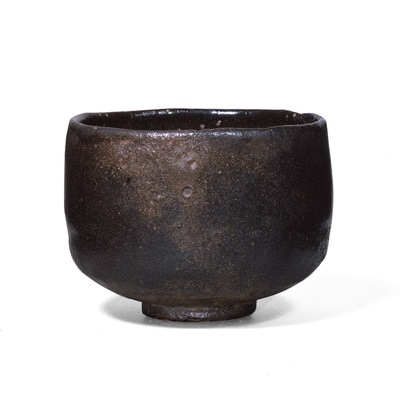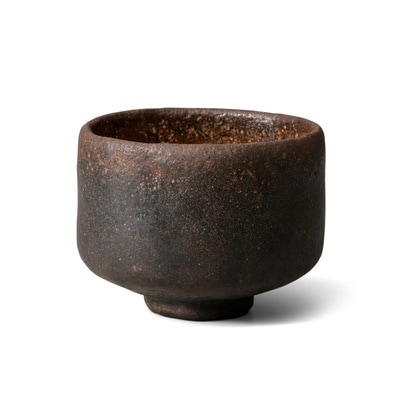| | Until May 21st, 2017 the MOMAT of Tokyo is holding an exhibition on Raku ware: The Cosmos in A Tea Bowl. In western countries, raku is often associated with a firing technique that involves taking a pot out of the kiln while burning hot and putting it in a container with combustibles materials to create unpredictable patterns while cooling the pot down very quickly. But in Japan, Raku is a family that has been making pottery in Kyoto for 15 generations since the 16th century. Raku tea bowls are highly sought after and embody the spirit of the wabi-cha promoted by Sen No Rikyu, who was a friend of Chojiro, the first generation of the Raku family. |
The collaboration between Sen No Rikyu and Chojiro resulted in unique and avant garde objects. Indeed, at that time luxurious Chinese ware were prized. However, the bowls that the Raku family made for Sen No Rikyu were simple and free from any ornamentation. These pieces were first called “Ima-yaki” (今焼) meaning the “now-wares”, a name that emphasizes the contemporariness of these pieces.
The exhibit at the MOMAT presents work from each of the 15 generations and even introduces works by Raku Atsundo who will carry on the tradition as the 16th generation. While the first generations’ tea bowls are glazed with only one colour, the creations by Kichizaemon XV are a lot more audacious: the surface is like a painting with brush strokes of dark blues and whites animating the bare clay.
What striked me most in that exhibit is how timeless the Raku wares are. Looking at the bowls from the 16th century, I felt like it could have been made just yesterday. There is something about the simplicity and organicity of the shapes, the texture of the glazes that allow these pieces to go through the ages without ever becoming outdated.
To read more about this exhibit that was held in Kyoto earlier this year, I recommend this article by the Japanese Times: Raku, A traditional contemporary art form.
You can also check out the exhibition’s official website (in Japanese) with photos of Chojiro’s work.
The exhibit at the MOMAT presents work from each of the 15 generations and even introduces works by Raku Atsundo who will carry on the tradition as the 16th generation. While the first generations’ tea bowls are glazed with only one colour, the creations by Kichizaemon XV are a lot more audacious: the surface is like a painting with brush strokes of dark blues and whites animating the bare clay.
What striked me most in that exhibit is how timeless the Raku wares are. Looking at the bowls from the 16th century, I felt like it could have been made just yesterday. There is something about the simplicity and organicity of the shapes, the texture of the glazes that allow these pieces to go through the ages without ever becoming outdated.
To read more about this exhibit that was held in Kyoto earlier this year, I recommend this article by the Japanese Times: Raku, A traditional contemporary art form.
You can also check out the exhibition’s official website (in Japanese) with photos of Chojiro’s work.


